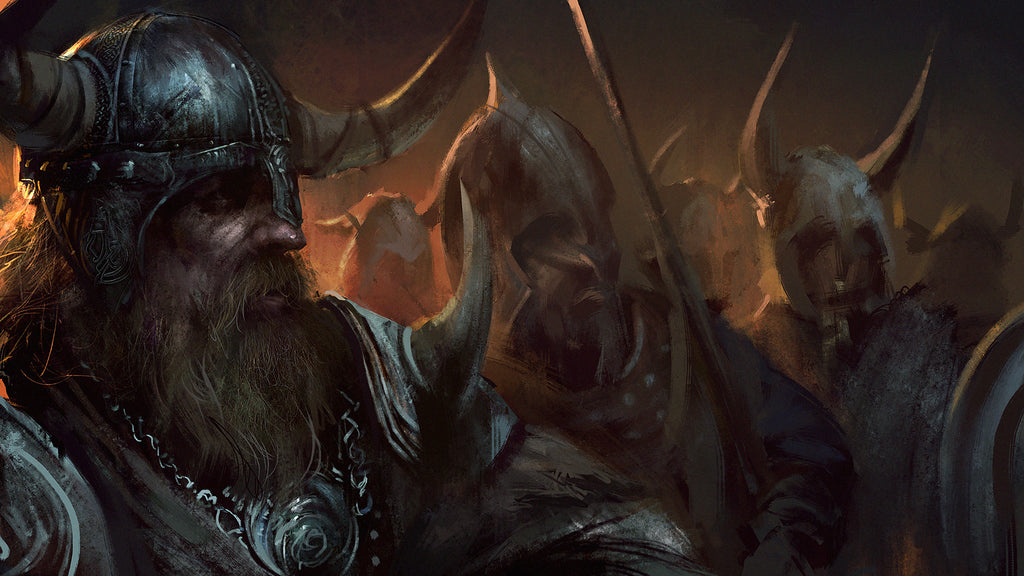What is the Misleading Root of the Viking Horned Helmet
Viking horned helmet is among the mysteries in the Viking age that we are yet to answer. It remains a question whether the Viking helmet had horns, wings, or antlers or not. The archaeological aritfacts by far have been pointing that there was no historical Viking horned helmet. However, some tapestry like the Oseberg tapestry confused the scholars with the depiction of the horned helmet.

Oseberg tapestry on the left side suggesting the Viking ritual. The leading man on the top left was wearing the horned helmet. This confused the scholars about the historical existence of the horned helmet.
But it was not until the 19th century that the writers and artists started to create the horned helmet in their work. This helped the horned helmet gain more popularity. And the Viking warriors gradually became attached to the horned helmets.
The root of the misleading Viking horned helmet can be traced back to Gustav Malmström a Swedish painter and costume in Wagner's Der Ring des Nibelungen by Carl Emil Doepler. Both of them depicted the Vikings with the horned helmets.

Odin the Allfather on his High Throne with his winged helmet by Carl Emil Doepler
In fact, some post-Viking culture had their own horned helmet. It meant Malmström, Doepler, and other artists might have derived their inspiration from the archaeological helmet from other cultures.
But the practical use of the horned helmets is dubious. They might have strike fear into the enemies or poke out the eyes of the enemies. But after all, the horned or the wings on the helmets would increase the chance to get entangled into the tree branches for example.

It is true that a horned helmet looks awesome and can strike fear into the enemies. But warriors with horned helmet stand the chance of being entangled into the tree branches in battle.
After researching the Viking helmets, the scholars concluded that the Vikings made their helmet by riveting pieces of iron. A few Viking helmet artifacts suggested that the Vikings attached the leather suspension system.
Possible materials like the sheepskin were likely to absorb the force of the blow from the enemies' weapons. A good absorbent material helped absorb sweat which prevented the helmet from getting rusted.

The Viking helmet artifacts on display in the museum. The left one was a simple bowl with the nose protector while the right one had the half face protector. Rivets connect pieces of iron to make it a helmet.
Overall, there have been no artifacts suggesting the historical existence of the Viking horned helmet. Rather, they just appeared in the ancient picture like the Oseberg tapestry.




